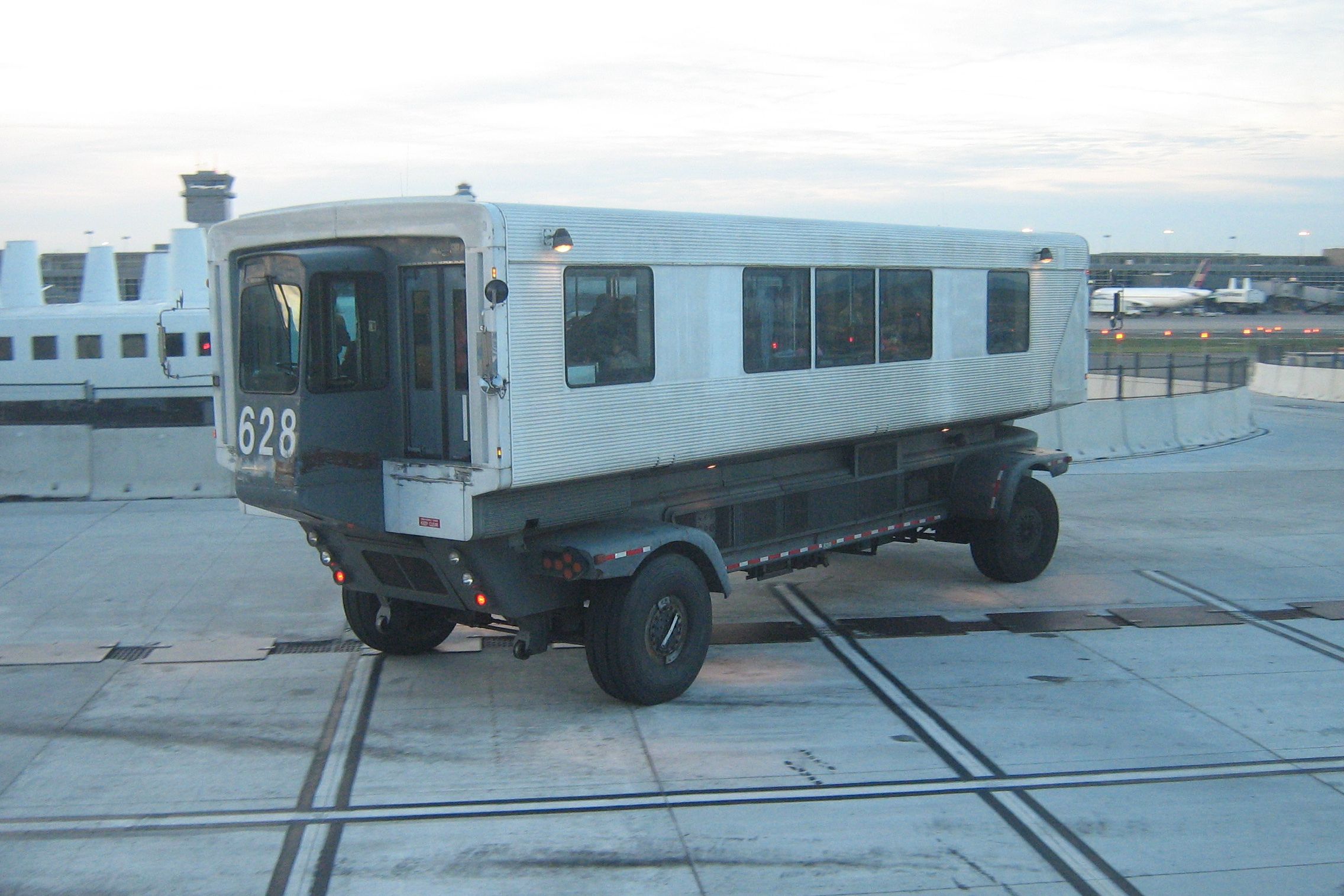Boarding an aircraft is a process that we are all familiar with, whether it is done via a jetbridge or external stairs from the apron. For the latter method, passengers are often required to take a bus transfer to a remote stand, where boarding via stairs occurs. However, another method of boarding an aircraft exists, known as mobile lounges.
These little-known vehicles serve as something of a halfway house between jetbridges and stairs, but they fell out of fashion decades ago. That said, you can still find them at a select few airports. A product of the 1960s The 1960s were an exciting time when it came to innovation in the world of aviation.

For example, this was the decade when the legendary Anglo-French supersonic jetliner Concorde made its first flight (although it didn't enter service until the 1970s). But back on the ground, further innovation was occurring. This came in the form of mobile lounges, which first entered service at Washington Dulles International Airport (IAD) in 1962.
As seen in the photograph below, these vehicles are much like the transfer buses that we know and love (to hate) today, but they can be raised and connected to an aircraft like a jetbridge. This meant that passengers boarding aircraft at remote stands didn't have to be exposed to the elements, letting them walk straight onto the aircraft much like a jetbridge. The concept was cooked up by Finnish-American architect Eero Saarinen, who wanted to make life easier for passengers when shuttling them from the main terminal, which he also designed.
Get the latest aviation news straight to your inbox: Sign up for our newsletters today. Specifications and usage More than 100 passengers can be accommodated in each of the mobile lounges, with 71 seated and another 31 standing. These vehicles are 16.
46 meters (54 feet) long, 4.88 meters (16 feet) wide, and 5.33 meters (17.
5 feet) tall. According to Atlas Obscura , they can travel at a reasonable pace too, reaching 26 mph (42 km/h). While Washington Dulles Airport initially used its mobile lounges to transport passengers to individual aircraft, their function changed over the years.
Indeed, the advent of jetbridges and satellite concourses rendered them less useful in this regard, so they were redesignated for inter-concourse transport instead. As it happens, Washington Dulles was not the only airport to use such vehicles over the years. Indeed, they have also seen use at Montréal's Trudeau (YUL) and Mirabel (YMX) airports, as well as the likes of New York JFK (JFK) and Paris Charles de Gaulle (CDG).
NASA even used similar, albeit modified, vehicles to transport its astronauts around. At Washington Dulles, the mobile lounge is set to stay for the foreseeable future after the airport decided to invest in its refurbishment last year. Although the airport invested over $1 billion into its AeroTrain system, its mobile lounges will benefit from a $143 investment to bring them up to modern standards.
Design firm Brookville Equipment Corporation will initially upgrade two vehicles before getting to work on the airport's entire fleet. The vintage mobile lounges will be given a new lease of life to transport passengers to and from the airport's Concourse D. Philadelphia International Airport (PHL) is also another user of mobile lounges, or what it terms PTVs (Passenger Transfer Vehicles).
These vehicles are primarily called up when no gates are available, but PHL is not as reliant upon them as Washington Dulles with just six vehicles at its disposal. According to the airport, each PTV is 60 feet long and weighs 76,000 lbs (38 tons), with a capacity for over 100 passengers. As explained by PHL Deputy Director of Facilities Maintenance Allan Moore, "Our PTVs are another tool to accommodate our guests in the event of gate unavailability or emergency situations so they can continue their journeys.
" Want answers to more key questions in aviation? Check out the rest of our guides here ! The downsides One of the main downsides of mobile lounges is their operating cost. They are rather bulky machines that need costly fuel, and also require more maintenance than jetbridges or external stairs. Speaking of maintenance, because the vehicles are so dated, it has become very difficult to source the correct spare parts for them, only adding to the cost of keeping them operational.
The current system of using bridges is also a quicker way of getting passengers onto the plane, allowing for a more efficient boarding process. This also allows passengers to gradually stream their way onto an aircraft, rather than a large block of passengers arriving at once and forming a long queue. Recent safety incidents As much as mobile lounges were once seen as the future of airport infrastructure, they are now essentially a fun, novel way for passengers to travel between concourses.
However, their recent safety record hasn't been perfect. Indeed, USA Today reported in October 2016 that two passengers had been hospitalized after one of the vehicles crashed into a construction trench at Washington Dulles International Airport. Two more passengers required hospital treatment in March 2022 after an incident at the same airport.
In this instance, the vehicle's rear wheel collided with a jersey wall. Another 12 passengers were evaluated for potential injuries at the scene but didn't need to be transported to the hospital..



















